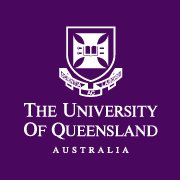Full description
This paper investigates the behaviour of adaptive walks to a phenotypic optimum when the phenotype is described by an additive quantitative genetics model or a simple gene regulatory network, the negative autoregulation (NAR) motif. Under the network model, the trait is constructed by solving an ordinary differential equation, which is modified by mutations at loci along the genome. Simulations were carried out in a custom version of SLiM 3.7.1 available at https://github.com/nobrien97/SLiM/releases/tag/AdaptiveWalks2023. This dataset contains csv files measuring trait responses (detailing how the mean population trait value changed during adaptation), mutation information (allelic effect sizes, origin times, and frequencies), and per-locus heterozygosity (describing the per-locus heterozygosity over time).Issued: 18 10 2023
Subjects
Biological Sciences |
Bioinformatics and Computational Biology |
Evolutionary Biology |
Genetics |
Genetics Not Elsewhere Classified |
Statistical and Quantitative Genetics |
eng |
User Contributed Tags
Login to tag this record with meaningful keywords to make it easier to discover
Other Information
The distribution of fitness effects during adaptive walks using a simple genetic network
local : UQ:6b464ef
O’Brien, Nicholas L. V., Holland, Barbara, Engelstädter, Jan and Ortiz-Barrientos, Daniel (2024). The distribution of fitness effects during adaptive walks using a simple genetic network. PLOS Genetics, 20 (5) e1011289, e1011289. doi: 10.1371/journal.pgen.1011289
Research Data Collections
local : UQ:289097
Identifiers
- Local : RDM ID: 321eb5b0-68a5-11ee-8106-a3d31968420c
- DOI : 10.48610/F3850B0



